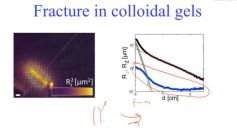Tags: Materials science
‘Catalytic Condenser’ Demonstrates Alternative Materials Like Metals for Stronger Renewable Energy

'Goldilocks' Superconductors One Step Closer With New Cerium Superhydrides

International Study Develops Technique To Visualize Microscopic 3D Displacements, Suggests Potential Uses
Most Perfect Graphene: Single-Crystal Specimen Has No Wrinkles, Folds, Adlayers
Metamaterials Made Simpler With Kirigami for Modular, Reconfigurable 3D Structures
Amalgamation of Two Metals Form Nanocrystals Through an 'Intuitive' Technique

High-Density Glass From a New Type of Thin Film Liquid Could Create Stronger, Denser Materials

Inorganic Material With Lowest Thermal Conductivity Successfully Fabricated; Could Lead to Greener Energy Solutions
First 'Defect Microscope' Can Monitor Subspace Line Defects in Macroscopic Materials
World's Tiniest Technology Thin Film That Is TWO Atoms Thick Used to Store Electric Information
The Janus Particle: How These Two-Faced ‘Nanoswimmers’ Could Improve Drug Delivery, Waste Recovery

LEGO Succeeds in Creating Recycled PET Plastic Bricks, But Will Take "Some Time" Before Hitting Shelves
Inkjet Printing of ‘Impossible Materials’ That Is Invisible to the Human Eye Now Possible With New Technology
Silver Iodate Finds New Use in Decomposing CO2 With Visible Light
Asian Beetle Species Offer Insights on New Color, Material Strength
Nanoelectronics, Semiconductors Benefit from Newly-Developed Electromigration Solution
Rare Iron Mineral Found in the Teeth of a "Wandering Meatloaf" in a First
Atomically Thin Materials Could Extend Moore's Law As New Transistors
Freezing Electrons as Temperature Rises: Discovered Graphene System Does That!
A New Use for Crab Shells: Chitin-Based Nanocarbon for Sustainable Electronics
Most Popular

Largest Known Volcanic Aquifer Discovered Beneath Oregon's Cascades

New 'Supergiant' Sea Bug Found in South China Sea, Named After Darth Vader

Mediterranean Sea Was Refilled by a Catastrophic Flood Millions of Years Ago

Mysterious Cosmic Waves That Sound Like Birds Detected in Unexpected Space Region




